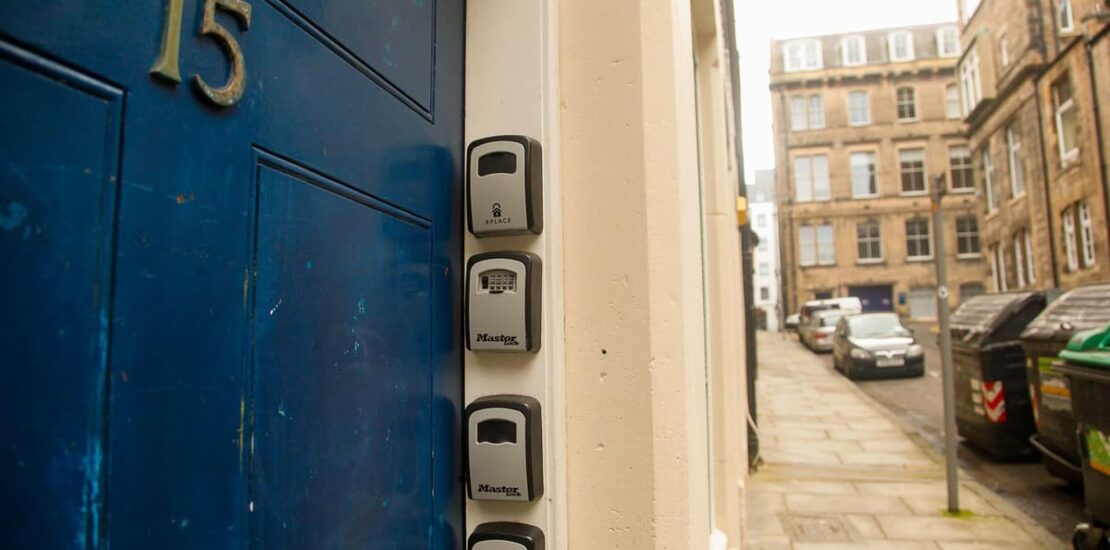Short-Term Let Control Areas, Extent and Effects.
- June 30, 2025
- Posted by: STL, Glasgow Office
- Category: Insights

With renewed discussion taking place in local authorities across Scotland regarding the possible confirmation of several new Short-Term Let Control Areas, it is worth once again reflecting on the effect of STLCAs.
At present, there are only two STLCAs in Scotland. These comprise the whole of Edinburgh (confirmed 05.09.2022) and the ward of Badenoch and Strathspey in the Highland Council area (confirmed 04.03.2024). Various other local authorities continue to consider whether to declare control areas, or (in the case of Highland) whether to significantly widen the bounds of the existing area. Any move to set up or expand a control area requires Scottish Government assent.
Planning Circular 01/2023 (17 May 2023) provides an overview of the process by which an STLCA is confirmed, but in general,
- The power to confirm a short-term let control area is vested in Section 26B of the Town and Country Planning (Scotland) Act 1997, which holds that;
- “In a short-term let control area, the use of a dwellinghouse for the purpose of providing short-term lets is deemed to involve a material change of use of the dwellinghouse.”
- The provisions do not apply to short-term tenancies where all or part of the dwellinghouse is the only or principal home of the landlord or occupier.
The term “dwellinghouse” is held to cover the use of flatted dwellings (as well as houses), and where a material change of use is instigated, a need for planning permission ensues. (Secs 26(1) and 28(1), Town and Country Planning (Scotland) Act 1997.)
Therefore, the effect of a STLCA is to create a deemed (automatic) need for planning permission for short-term letting use of a given property, other than where that property is let on a “home-let” or “home-share” basis. It must further be kept in mind that this “automatic” requirement for planning permission is only invoked for uses starting after the confirmation of the relevant STLCA. Uses instituted prior to confirmation do not invoke Section 26B (Muirhead [2023] CSOH 86) and are treated differently when determining whether a material change of use occurs.
In such circumstances, whether or not a short-term letting use requires planning permission is a matter of fact and degree, with assessment encompassing a number of different considerations (Cameron [2020] CSIH 6), with the law continuing to evolve in light of further cases which have addressed the matter of “material changes of use.” (See, inter alia, Macintyre [2021] CSIH 10 on the matter of the proper construction and potential applicability of Use Classes.)
In summary, where a secondary letting short-term letting use begins after confirmation of a relevant STLCA, there will follow an automatic need for planning permission. Licensing conditions (for example, Mandatory Condition 13) will then mandate that a planning permission application must be in place before any issued licence can be lawfully used, and it may not be possible to procure a licence where it is considered that the applicant “would not be able to secure compliance” with Mandatory Condition 13, for example (Civic Government (Scotland) Act 1982, Schedule 1, Para 5, as amended).
The legality of any actual refusal under such circumstances would be questionable, given the wording of MC13 and the fact that a licence to operate a property as a short-term let does not mean that any such use necessarily (or immediately) ensues. Where a property is considered to be a home-let/home-share, or the STL use pre-dates any relevant STLCA, the use may or may not require planning permission.
Bear in mind, however, that just because a use does not invoke a control area does not mean that it will not still require planning permission. There may be no automatic requirement for planning permission under Section 26B, but a need may still otherwise exist in terms of Section 26(1) of the 1997 Act. Being ‘exempted’ from a control area’s effect does not alter the underlying position that a material change of use requires planning permission.
Determination in such cases relies on what remains (in the absence of a new Use Class) a somewhat subjective and mercurial assessment process which can be lengthy (not to mention expensive, given application and appeals fees) and which still struggles (despite the best efforts of Planning Officers and Appeal Reporters) to deliver consistency.
Further confusion exists around the matter of “home-letting”, which does not (according to Sec 26B) invoke a “deemed” material change of use. There is no statutory definition of a “principal home” or any attempt on the part of the Scottish Government to provide useful guidance on the matter.
A property which can be construed (in planning terms) as a “principal home” could necessarily only be in use as an STL to some ‘ancillary’ extent, with what is ‘ancillary’ a matter subject to the same kind of subjective fact and degree assessment to which other forms of short-term letting require to be put.
Given some of the complexities surrounding the interaction between the existing planning and licensing regimes and STLCAs, STL Solutions recommends that any operator trading in an area which is (or which could become) a control area seek advice. This includes those undertaking or planning to undertake short-term letting of what they consider to be their principal home. What is clear is that, given the significant political effect of STLCAs on the thinking of authorities, proactively regularising the planning and licensing status of a short-term let property before any confirmation remains strongly recommended.
30.06.25.
STL Solutions offers a range of licensing and planning advice services and can actively assist STL Operators (whether in or outside of control areas) who want to ascertain if planning permission might be required in their individual case. Our consultants can advise you on the attitude of local and national planning authorities and provide guidance as to whether your use might be held to be a material change of use requiring planning permission.
About the Author
Ross Armstrong
Related Services
Reach out to know more
For more insights, please subscribe
For more insights, please subscribe
Contacts
-
STL Solutions
Clockwise, Savoy Tower
77 Renfrew Street,
Glasgow, G2 3BZ
Registered in Scotland: SC771971 -
-



